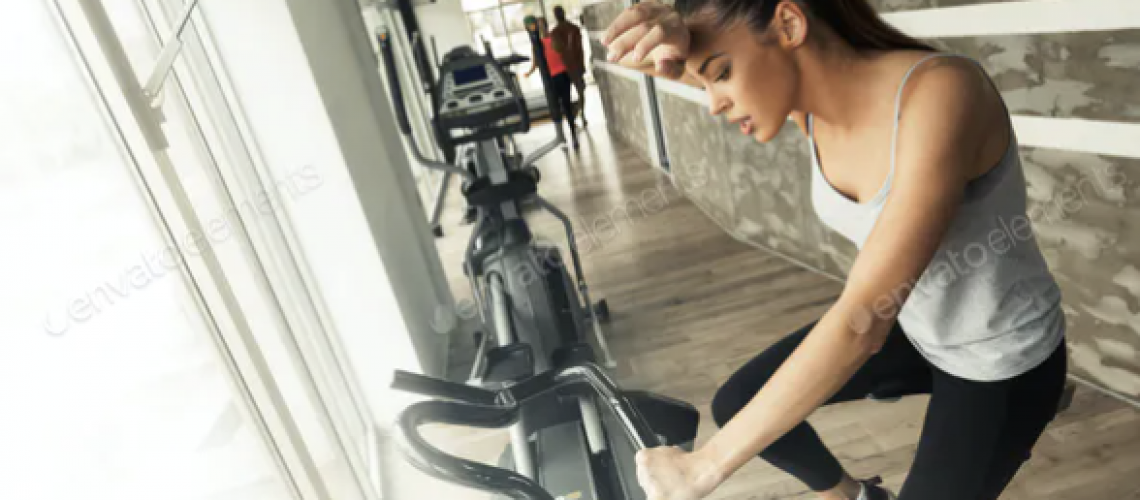When the time comes for you to go into a calorie deficit (burn more calories than you are consuming) to lose weight or body fat, it can be common for people to ramp up their calorie output by increasing the amount of cardio that they do on a day-to-day basis.
This is mainly because cardio is often attributed to fat loss, weight loss, and getting in better shape. However, if you are in too much of a calorie deficit through doing lots of cardio every day, energy levels and motivation drop, due to its lack of sustainability and therefore leading to a halt in progress. So, how much cardio do you really need to do and what is the best combination of exercise for your fat loss goals?
Firstly, it is important to understand the types of cardio at your disposal. There is high-intensity interval training (HIIT) which involves several periods of performing at maximum effort and intensity. Then you have medium intensity interval training, which is a step down from HIIT but still features intervals or circuits of high intensity. The next level down is medium intensity steady state cardio, which involves jogging or cycling, for example, at a steady pace for a prolonged period. The final type of cardio is low-intensity steady-state cardio (LISS), which features walking at your normal pace.
All of these types of cardio are used by different people. This is because people have different lifestyles, preferences, work situations and other circumstances that are beyond their control. So, for those who have a busy schedule, HIIT and even medium intensity interval training are going to be ideal forms of cardio because they are less time consuming and burn a higher number of calories in a shorter space of time.
On the other hand, for those who have more time on their hands, low-intensity steady-state cardio could be a better option because it less taxing on your central nervous system and is generally more sustainable if you aim to do it every day. Preference can also play a big part – some people like the feeling of HIIT, for example, and that is the main reason why they do it, whereas others prefer LISS because they like to go out walking and enjoy the outdoors.
Despite having these options available to you, it is important to remember that weight training and building some muscle/toning should still be the priority. This is because lean muscle tissue burns a lot of fat, as well as giving your body a better overall structure and look. This means that your body has to work harder to retain your muscle mass by using more energy and therefore burning more calories.
Resistance training sessions burn lots of calories and also help you improve and hold onto your strength, as well as give you more energy. In general, your resistance training sessions do not change much – you still need to lift heavy, stick to the same rep range and continue the training split and intensity that has brought you results in the future.
Providing that you are consistent with your training, the calorie deficit is going to come from your diet and the additional calories you are burning outside of your resistance training sessions. Therefore, deciding what form of cardio you wish to proceed with is important.
As mentioned before, some form of cardio should be performed but the type of cardio you do will depend on your work/life situation. However, I would generally lean towards Low-Intensity Steady-State cardio because it is more sustainable and enjoyable for people – a more intense form of cardio, combined with your resistance training sessions, can be very demanding on your body and could lead to burn out, especially given the lower energy levels from the reduction in calories in your diet.
An hour of walking can burn up to 300 calories, depending on the individual. So, combining this with your resistance training sessions means that you could be burning up to 1,000 calories from them both, on training days. Then, throw in all the Non-Exercise Activity Thermogenesis (NEAT) calorie output (calories burned outside of exercise e.g. cooking, gardening, making your bed), along with your Basal Metabolic Rate (BMR) (the number of calories you burn if you without doing anything), and you will have created a calorie deficit for yourself.
Remember, the deficit has to be moderate (400-500 calories) in order to achieve your fat loss goals. This also means that you don’t have to create the deficit by starving yourself and instead it is created by energy output.
So, in summary, it is certainly recommended that you do some form of cardio when in a fat loss phase. hHowever, it should be used as an added tool for the two main priorities – resistance training and diet. The type of cardio performed will depend on the individual, but make sure it is sustainable and enjoyable. This combination is what is going to be key to achieving your fat loss/weight loss target in a healthy and effective manner.
Photo Credit: Envato Elements


